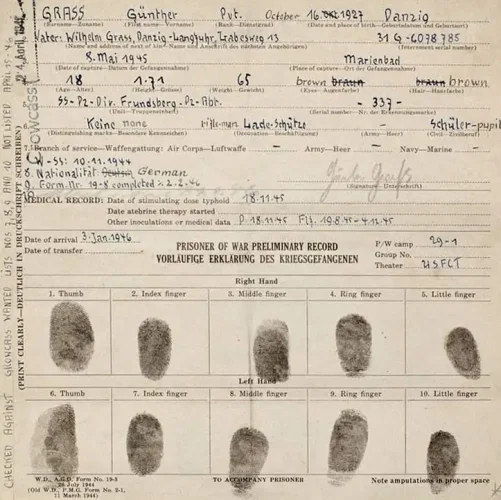- Military History
- Agencies, Organizations & Political Parties
- Central Registry of War Criminals and Security Suspects (CROWCASS) - 1944

Central Registry of War Criminals and Security Suspects (CROWCASS) - 1944 CROWCASS, was an organization set up to assist the United Nations War Crimes Commission and Allied governments
In late 1944, Allied authorities in Paris began contemplating the creation of an organization to track and catalogue persons who might be of interest for the war crimes trials that were expected to be held once the war in Europe had been won.
The result was the Central Registry of War Criminals and Security Suspects (CROWCASS), established at the Supreme Headquarters of the Allied Expeditionary Force at Versailles. CROWCASS should maintain wanted lists of known war criminals, suspected war criminals, and individuals who were wanted for questioning or to serve as witnesses in potential trials; they made these lists available to Allied authorities, particularly those in charge of the growing prisoner of war camps, to ensure that wanted individuals did not slip through the cracks.
They were also used (and added to) by the teams of investigators that the Allies had put together to identify suspects for future trials. These teams established three separate camps in the Normandy region to house people on the CROWCASS lists.
Using its own staff and information submitted by war crimes investigators in other countries, the registry collected some 70,000 names in its first three weeks, but it was hampered by poor management and a lack of resources. As a result, the first list was not published until July 1945, and even then, it included the names of many individuals who had already been identified in earlier United Nations War Crimes Commission lists or who were already in custody.
The July 1945 list was not fully distributed until October, making it of limited utility to prison camp commanders who had to cope with the tens of thousands of surrendered German soldiers, sailors, and airmen who had to be classified. By the end of 1947, four volumes of lists (comprising some 50,000 names) had been published, but the problems in the registry were by now manifest. It had become clear early in the process that identifying "security suspects" was a tedious and time-consuming task, and that part of CROWCASS's mandate was soon dropped so that personnel could concentrate on war criminals.
Investigators came to doubt the accuracy of the registry's information and were hampered because it often failed to differentiate between people who were suspected of serious crimes against humanity, and low-ranking members of the armed forces who were simply wanted for an interview about a possible war crime. If, for example, one infantry unit had been implicated in a potential crime, it was customary for the registry to list all members of that unit, even those who were not present when the events occurred.
Finally, CROWCASS was criticized for stating the obvious, such as its decision to put Adolf Hitler at the top of the list, even though most people accepted the fact that he had committed suicide in May 1945.
Still, 60 years later, the CROWCASS list remains a fascinating document to read. It even returned to the headlines briefly in 1986 when the World Jewish Congress revealed that the name of former United Nations secretary-general and president of Austria Kurt Waldheim had been found on one list, with the notation that he had served with an army unit in the former Yugoslavia that had waged a violent war against anti-Nazi partisans and that had been implicated in atrocities against captured partisans.
An international investigation eventually cleared Waldheim of any role in war crimes, although that his name had once been noted by CROWCASS cast a pall over the rest of his political career.
Allied forces compiled the attached records that represent an index of wanted war criminals and witnesses. The UNWCC (United Nations War Crimes Commission) originally published these documents in their archive. The documents were the basis for the investigation into allegations of war crimes committed by Nazi Germany and the other Axis powers in World War II.
Central Registry of War Criminals and Security Suspects (CROWCASS) - 1944 - Quick Facts
Map
- {{#owner}}
- {{#url}} {{#avatarSrc}}
{{name}} {{/url}} {{^url}} {{#avatar}} {{& avatar}} {{/avatar}} {{name}} {{/url}} - {{/owner}} {{#created}}
- {{created}} {{/created}}

























